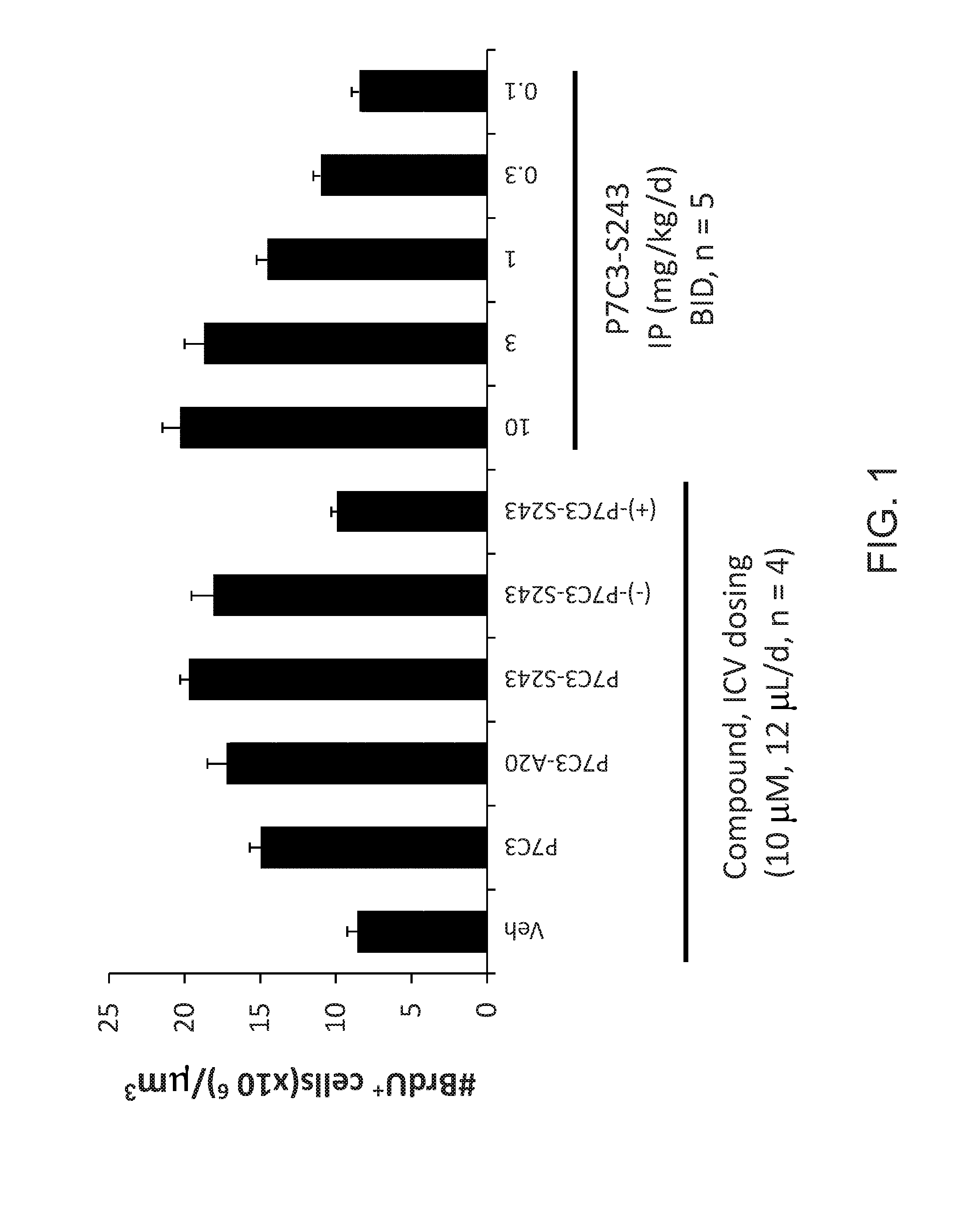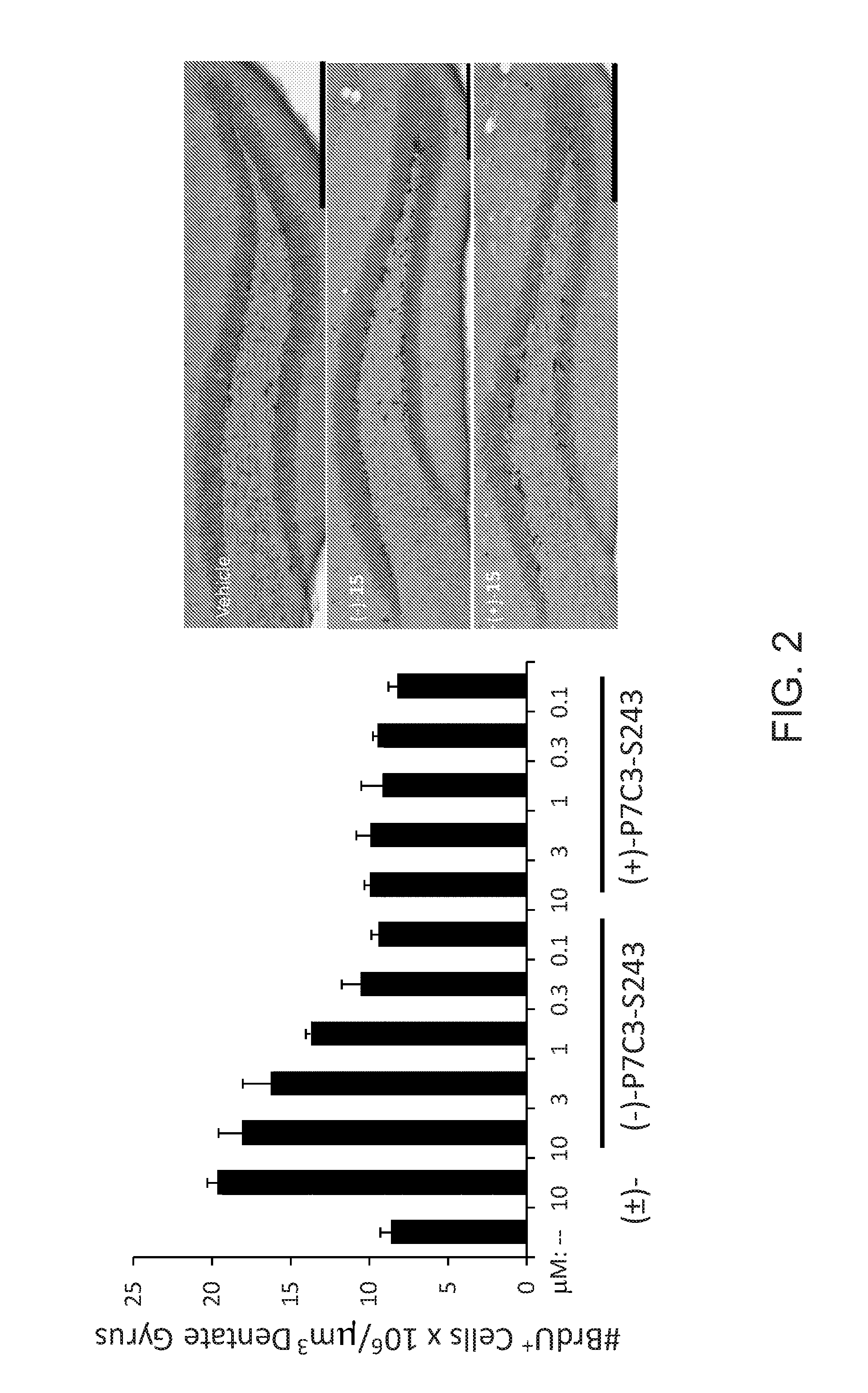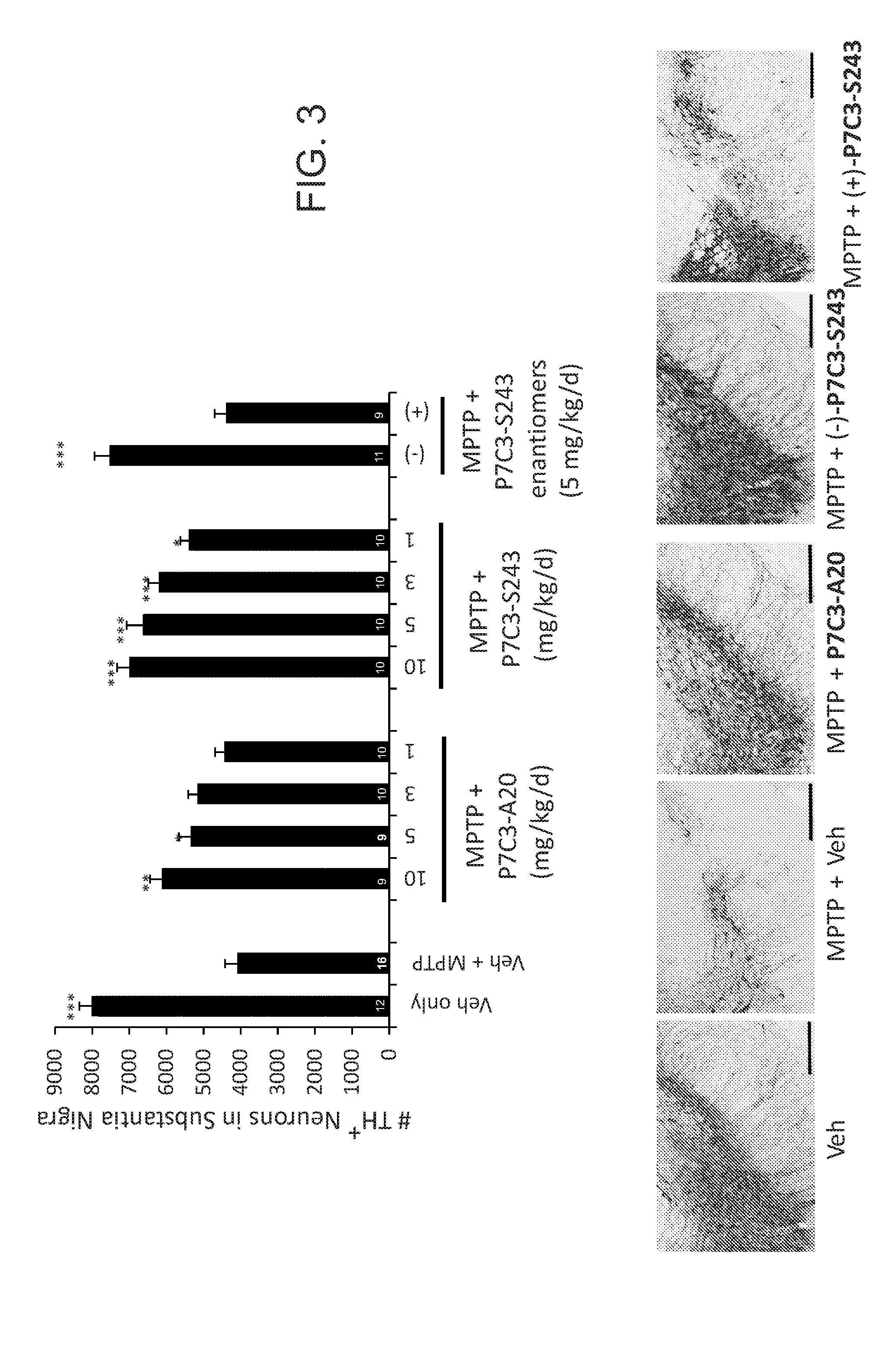Neuroprotective Compounds and Use Thereof
a technology of neuroprotective compounds and compounds, applied in the field of neuroprotective compounds, can solve the problems of increasing the risk of tbi associated with long-term neurologic complications, cognitive and motor decline, and the military and civilians around the globe, and achieve the effect of enhancing the net magnitude of hippocampal neurogenesis
- Summary
- Abstract
- Description
- Claims
- Application Information
AI Technical Summary
Benefits of technology
Problems solved by technology
Method used
Image
Examples
example 1
Discovery of (−)-P7C3-S243 as a Neuroprotective Compound and its Effect in MPTP Toxicity Model of Parkinson's Disease
[0435]Abstract.
[0436]This study identified (−)-P7C3-S243 as a neuroprotective aminopropyl carbazole with improved drug-like properties compared to previously reported compounds in the P7C3 class. It protects developing neurons in a mouse model of hippocampal neurogenesis and protects mature neurons within the substantia nigra in a mouse model of Parkinson's disease. Furthermore, it protects dopaminergic neurons from toxicity associated with 6-OHDA in a rat model of Parkinson's disease and additionally improves motor function in that model. A short, enantioselective synthesis provides (−)-P7C3-S243 in optically pure form. It is non-toxic, orally bioavailable, metabolically stable and crosses the blood-brain barrier. As such, it represents a valuable lead compound for the development of drugs to treat neurodegenerative diseases and traumatic brain injury.
[0437]Introduct...
example 2
The P7C3-Class of Neuroprotective Molecules Protects Mice from Blast-Mediated Traumatic Brain Injury
[0475]Abstract.
[0476]Improvised explosive devices (IEDs) widely used in modern warfare have increased the prevalence of blast-mediated traumatic brain injury (TBI) in soldiers. TBI causes neuronal damage in the brain resulting in chronic cognitive and motor neurological symptoms (1), as well as a range of vision problems (23). Sadly, there is a lack of effective pharmacologic therapeutic options for these patients. The P7C3-series of aminopropyl carbazole neuroprotective molecules (2-6), however, has been shown to have both neuroprotective and functional protective efficacy in the moderate fluid percussion injury model in rats (22). When administered 30 minutes after injury, these agents blocked death of mature cortical neurons, enhanced hippocampal neurogenesis by blocking death of newborn hippocampal neurons, and preserved outcome measures of both sensorimotor (spontaneous forelimb ...
example 3
Additional Compounds
[0511]Additional compounds were synthesized and tested using the above-described in vivo neuroprotection assay. Their structure and neuroprotective activity, as suggested by the number of BrdU+ cells, are shown in Table 2 below.
TABLE 2StructureNAcompound# cell (E6) / namemm{circumflex over ( )}3SEMvehicle14.5 1.08P7C330 1.42P7C3-S31820.8 1.5P7C3-S32427 1.8P7C3-S32530.6 3.2P7C3-S32625 1.5
PUM
 Login to View More
Login to View More Abstract
Description
Claims
Application Information
 Login to View More
Login to View More - R&D
- Intellectual Property
- Life Sciences
- Materials
- Tech Scout
- Unparalleled Data Quality
- Higher Quality Content
- 60% Fewer Hallucinations
Browse by: Latest US Patents, China's latest patents, Technical Efficacy Thesaurus, Application Domain, Technology Topic, Popular Technical Reports.
© 2025 PatSnap. All rights reserved.Legal|Privacy policy|Modern Slavery Act Transparency Statement|Sitemap|About US| Contact US: help@patsnap.com



